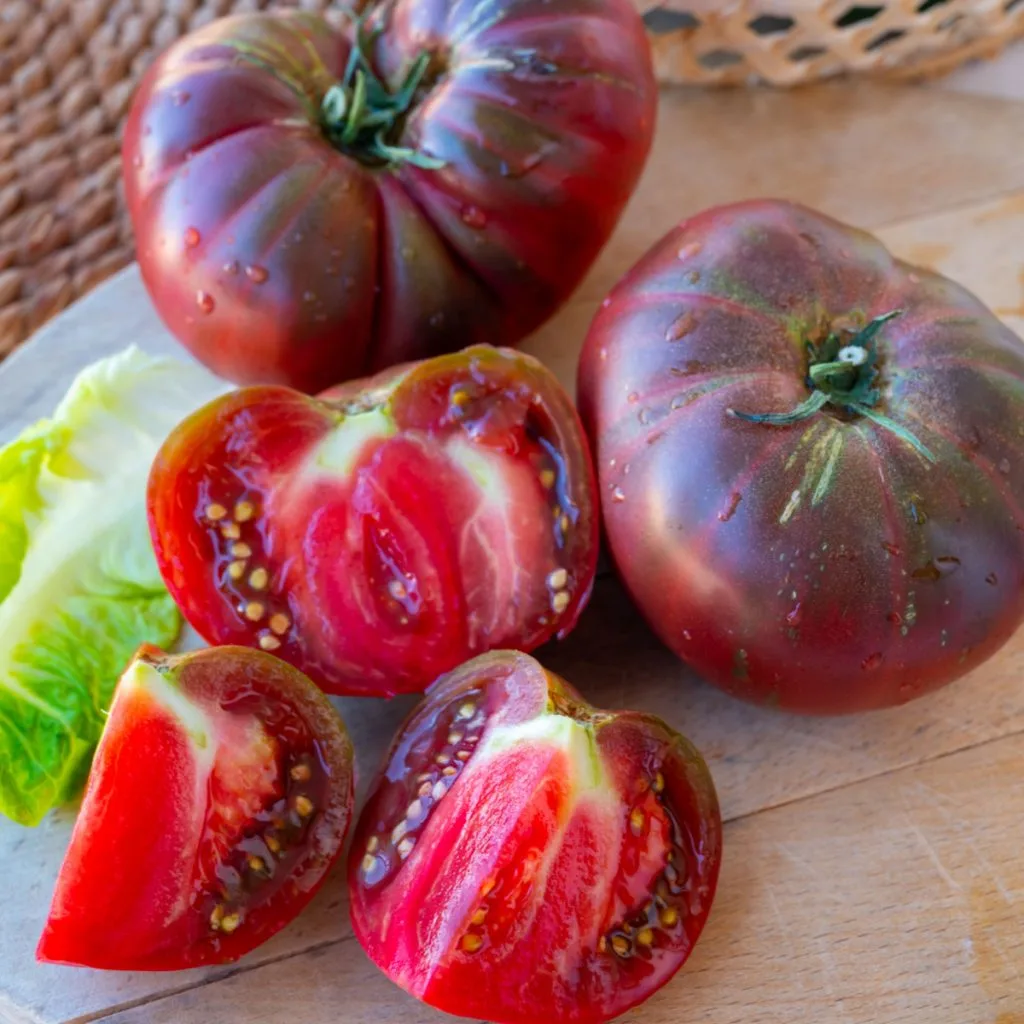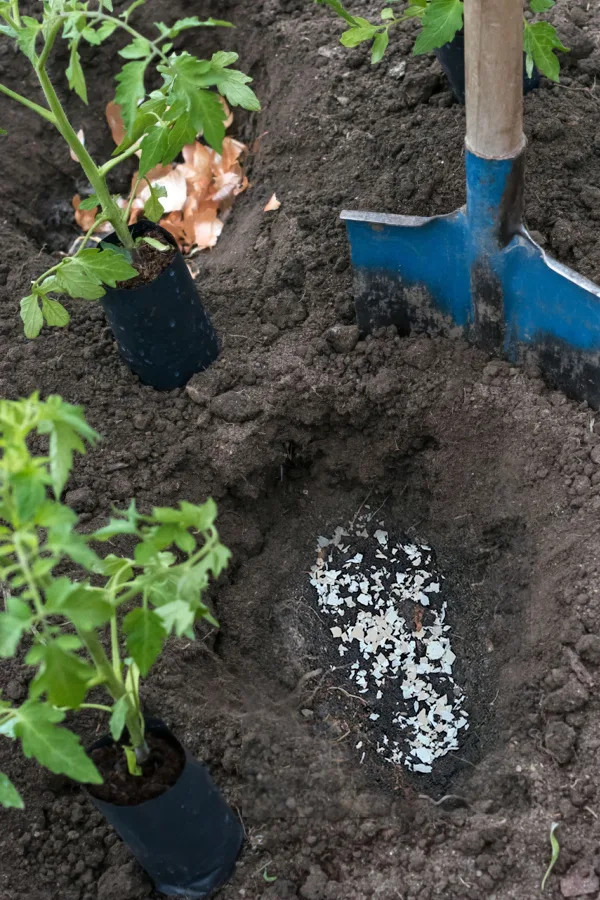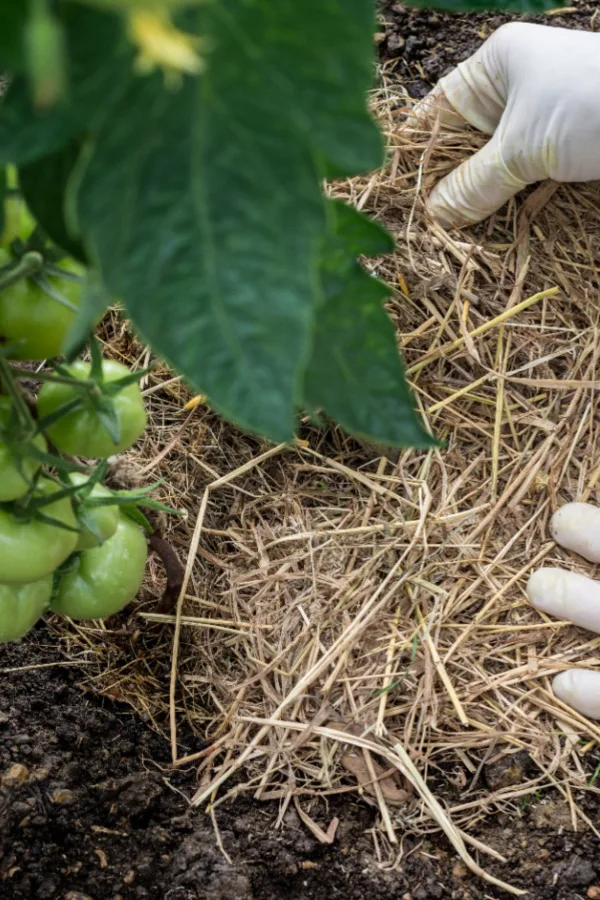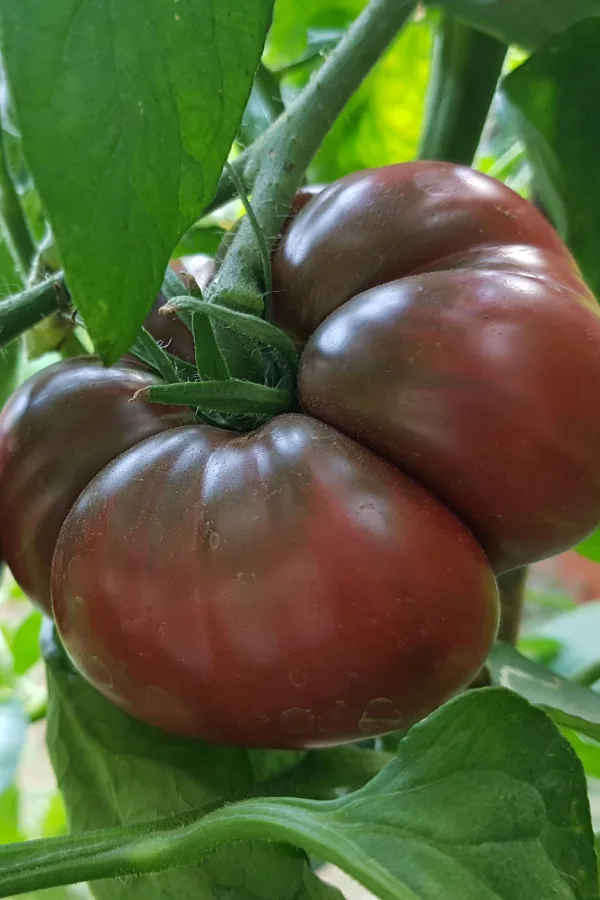If you are looking to grow a tomato variety that not only packs a punch of delicious deep flavor but looks incredibly beautiful as well, then you need to be growing Black Krim tomatoes this year!
Black Krim tomato plants produce juicy, large-sized slicing tomatoes with dark purplish-black coloring. Their stout, globe shape makes them perfect for slicing and putting on your favorite sandwiches. But their flavor lends them to so much for than just sandwich duty!
The flavor of a Black Krim tomato is a perfect balance of sweetness and acidity, finishing with a slightly salty taste. They are a favorite among chefs and sellers in the West Coast region of the United States, but they are also adored almost everywhere.

The History Of Black Krim Tomatoes
First originating in Ukraine, the Black Krim tomato is an heirloom indeterminate tomato variety. The exact date of creation is unknown, but they are definitely a variety that dates back to long ago.
Sometimes referred to as “Black Crimea,” the Black Krim name comes from growing first in the region of the Crimean Peninsula near the Black Sea. According to some sources, the seeds of the Black Krim tomatoes were said to have been saved by soldiers coming home from the Crimean War.
Those seeds were passed down through generations before finally being shared outside the Crimean area. It wasn’t until 1990 that the Black Krim tomato became the first true purplish-black tomato to be available commercially in the United States. It was followed soon after by the Cherokee Purple tomato. (See, “Growing Black Cherokee Tomatoes”)
Growing Black Krim Tomatoes
Growing Black Krim Seeds And Transplants
Black Krim tomato plants are slow to produce, taking around 80 days from sowing to harvest. But once they do start flowering and fruiting, they are heavy producers, pushing out a continuous harvest of 8 to 12-ounce fruits.
Because of their slow time to maturity, seeds need to be started indoors. A great advantage of growing Black Krim tomatoes by seed is that you can start several plants for far less than purchasing just one tomato transplant.

Sow seeds about 8 weeks before your areas last first frost date. Use a light and airy seed starting soil, keeping it consistently moist but not saturated. Keep the seedlings under bright lights for at least 12 to 14 hours each day. Once the temperatures and soil start to warm up, you can then transition plants outdoors.
You can also purchase Black Krim tomatoes as transplants. However, even though this variety is gaining in popularity, it can often be difficult to find in local nurseries in the spring. For that reason, seeds really are the way to go. Affiliate Seed Link: Heirloom Black Krim Seeds
Planting – Growing Black Krim Tomatoes
As soon as the weather warms and the threat of frost has passed, it’s time to get your transplants outside. Give your transplants about two weeks to harden off before planting into the garden.
Since Black Krim is an indeterminate tomato variety, they continually grow and produce all season long. With mature sizes that can reach well over six feet tall, Black Krim plants work best when planted directly in gardens and raised beds as opposed to containers.
Tomato crops require at least 6 to 8 hours of direct sunlight every day in order to thrive. With that in mind, choose a location for your Black Krim tomatoes with full sun and well-draining, fertile soil.

Create a planting hole that is deep and wide. Amend the soil with plenty of compost, worm castings, egg shell powder and a couple of tablespoons of used coffee grounds. By loosening the soil in a large planting hole and adding in extra power, you will get your tomato plants to develop deep roots quickly.
Plant your tomato transplants deep. Tomato plants create roots all along their stems. By planting deeply, all of those extra roots will help develop a sturdy base of deep roots that will help keep it upright as it grows. Even more, all of those extra roots help to absorb more power from the soil as well.
Backfill with additional soil and compost and lightly tamp down. When planting, it’s always best to install tomato supports right as you plant. This puts the stakes in the ground early and avoids the risk of damaging the growing roots of the plant if you install later.
Mulching & Watering – Growing Black Krim Tomatoes
Black Krim tomatoes benefit from the addition of several inches of organic mulch on top of the soil. Mulch helps to combat weeds, regulate soil temperatures and retain moisture. Anything from straw to shredded leaves and grass clippings are perfect as a mulch.

Create a 4 to 5-inch thick layer of mulch around each plant. Keep the mulch at least 12 to 18 inches in diameter around the base of your stem, but avoid letting the mulch touch the stem. This will help protect the root zone of each plant but keep the stem safe from rotting out from too much moisture.
Water the tomato plants weekly so that they get at least 1 to 1.5 inches of rainwater or hand watering. When possible, avoid watering overhead. Overhead watering can knock blooms from the plant and also encourage mildew with overly wet leaves. Instead, water plants deeply at the base of each plant.
Fertilizing
Black Krim tomato plants are heavy feeders, so they require frequent fertilizing. Provide plants with a half-strength dose of commercial organic liquid fertilizer every two weeks. (Affiliate Product Link: Espoma Organic Tomato Liquid Fertilizer)
Alternatively, you can give plants a good drink of compost or worm casting tea. With these two organic fertilizers, you can use at full strength every fourteen days. As with all tomato plants, a low but consistent feeding is better than large single doses.
Pruning And Harvesting – Growing Black Krim Tomatoes
Since Black Krim tomatoes are indeterminate varieties, they benefit from occasional pruning. Along with removing the foliage from the bottom 12 to 18 inches of the plant, prune off suckers as they form as well.

Proper pruning will help to increase the airflow and sunlight so it can reach all parts of the plant. Not only will pruning prevent plants from becoming unruly, but it also helps them stay healthy and free of disease.
It can be a bit difficult to tell when Black Krim tomatoes are fully ripe. The top of the fruit will have a slight tint of dark green while the rest of the fruit will be dark burgundy or almost black. The fruit should provide a slight give when gently pressed and the skin should be smooth.
Enjoy eating Black Krim tomatoes fresh on sandwiches or in salads. They also are perfect for turning into Bloody Mary drinks or other juices and sauces. No matter how you enjoy them, Black Krim tomatoes are a must have for growing in your garden this year!
I Grow Tomatoes
Follow Our Facebook Page For Even More Great Tomato Growing Tips! I Grow Tomatoes Facebook Page
I Grow Tomatoes is a website created for those who love all things about tomatoes – from planting and growing – to cooking and canning! We publish two articles every week, 52 weeks a year. Sign up today to follow via email! This article may contain affiliate links.
